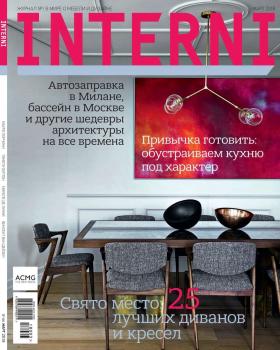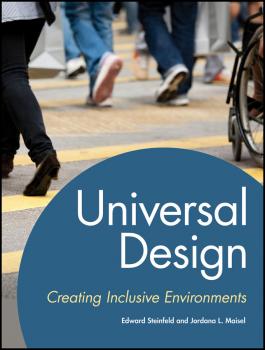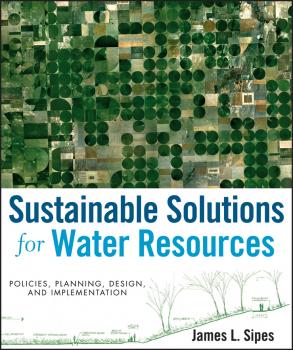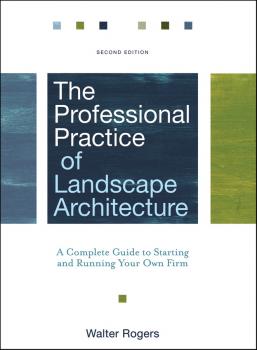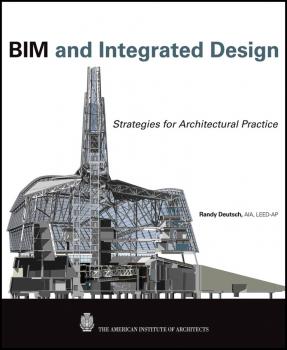ТОП просматриваемых книг сайта:
Архитектура
Различные книги в жанре Архитектура, доступные для чтения и скачиванияАннотация
ЖУРНАЛ ОБ ИНТЕРЬЕРАХ И СОВРЕМЕННОМ ДИЗАЙНЕ
Информация о книге
Автор произведения Редакция журнала Interni
Жанр Архитектура
Серия Редакция журнала Interni
Аннотация
ЖУРНАЛ ОБ ИНТЕРЬЕРАХ И СОВРЕМЕННОМ ДИЗАЙНЕ
Информация о книге
Автор произведения Редакция журнала Interni
Жанр Архитектура
Серия Редакция журнала Interni
Аннотация
ЖУРНАЛ ОБ ИНТЕРЬЕРАХ И СОВРЕМЕННОМ ДИЗАЙНЕ
Информация о книге
Автор произведения Редакция журнала Interni
Жанр Архитектура
Серия Редакция журнала Interni
Аннотация
A highly illustrated reference tool, this handbook provides comparative visual analysis of major urban extensions and masterplans around the world. It places an important new emphasis on the processes and structures that influence urban form, highlighting the significant impact that public or private landownership, management and funding might have on shaping a particular project. Each of the book’s 20 subjects is rigorously analysed through original diagrams, scale drawings and descriptive texts, which are complemented by key statistics and colour photography. The case studies are presented in order of size rather than date or geographical location. This offers design professionals, developers and city planners, as well as students of architecture and urban design informed organisational and formal comparisons, leading to intriguing insights. A wide geographical range of contemporary and historic masterplans are featured. These encompass European projects from the 19th century to the present day: Belgravia in London, Sarphatipark in Amsterdam, Potsdamer Platz in Berlin, La Défense Seine Arche in Paris and Hammarby Sjöstad in Stockholm. In North America, the postwar development of Stuyvesant Town in Manhattan is also the subject of a case study. More recent and ongoing international urban schemes are included, such as Puerto Madero in Buenos Aires, Downtown Dubai and the New Central Business District in Beijing.
Аннотация
A much-needed reference to the latest thinking in universal design Universal Design: Creating Inclusive Environments offers a comprehensive survey of best practices and innovative solutions in universal design. Written by top thinkers at the Center for Inclusive Design and Environmental Access (IDeA), it demonstrates the difference between universal design and accessibility and identifies its relationship to sustainable design and active living. Hundreds of examples from all areas of design illustrate the practical application of this growing field. Complete, in-depth coverage includes: • The evolution of universal design, from its roots in the disability rights movement to present-day trends • How universal design can address the needs of an aging population without specialization or adaptation to reduce the need for expensive and hard-to-find specialized products and services • Design practices for human performance, health and wellness, and social participation • Strategies for urban and landscape design, housing, interior design, product design, and transportation Destined to become the standard professional reference on the subject, Universal Design: Creating Inclusive Environments is an invaluable resource for architects, interior designers, urban planners, landscape architects, product designers, and anyone with an interest in how we access, use, and enjoy the environment.
Sustainable Solutions for Water Resources. Policies, Planning, Design, and Implementation - James Sipes L.
Аннотация
Get the single-source solutions guide to the sustainable management of water resources. Why is water the environmental issue? The answer is simple: without it, life on this planet could not exist. Yet, despite this fact, reckless consumption practices from a growing population are drying up the Earth's already limited water resources. Other factors, such as river and lake contamination, rising temperatures, and disproportionate geographic accessibility further contribute to the fresh water crisis. To confront this pressing concern, this enlightening guide, which covers over twenty case studies offering insights into real-world projects, uses a holistic, integrated approach to illustrate ways to preserve vital water supplies – from green design remedies to encouraging greater personal responsibility. This book: Provides a basic overview of water resources, hydrology, current problems involving water resources, and the potential impact of global warming and climate change. Covers watershed planning, Best Management Practices, and potential design and planning solutions. Offers a concise overview of the issues affecting water use and management. Includes a full chapter dedicated to planning issues, and a full chapter covering site planning, design, and implementation. Sustainable Solutions for Water Resources takes a practical approach to head off a global water catastrophe by offering sensible measures that can be put in place immediately to promote a clean, plentiful flow of the Earth's most precious resource.
The Architect's Guide to Small Firm Management. Making Chaos Work for Your Small Firm - Rena Klein M.
Аннотация
The definitive guide to management success for sole practitioners and leaders of small design firms Owning and operating a small architectural design firm can be challenging, with tight project deadlines, on-the-fly meetings, rush proposals, and fluctuating workloads as part of the firm's day-to-day activities. To help small firm owners cope with the chaos and prepare for the unexpected, here is The Architect's Guide to Small Firm Management, a no-nonsense guide to repurposing daily demands into workable, goal-directed solutions. Crucial topics such as self-aware leadership, people management, technology, financial health, scenario planning, sustainable practice, and future trends are examined using real-life case studies and business model paradigms. This definitive text explores the whole system experience of a small firm practice to deliver organizational strategies proven to keep a firm's creative mission on a steady, productive path. The Architect's Guide to Small Firm Management addresses how small firm owners can: Deal effectively with unexpected circumstances and shifting work requirements Meet the demands of the marketplace while creating a satisfying workplace Set and achieve goals in an environment of constant change This book is a must-have for those facing the often harsh reality of managing small design firms in a difficult and changing economy. Entrepreneurial architects and designers will discover how to define their own personal and professional meanings of success, as well as how to refocus their business approach to replace long, unrewarding hours with manageable, satisfying ones.
The Professional Practice of Landscape Architecture. A Complete Guide to Starting and Running Your Own Firm - Walter Rogers
Аннотация
The all-inclusive reference to starting and operating a landscape architecture firm The Professional Practice of Landscape Architecture, Second Edition is completely revised to keep up with the latest developments driving the day-to-day operation of a successful private-practice landscape architecture office. Whether helping a landscape architecture student identify a career track, providing direction on starting a new office, guiding an owner seeking to jumpstart a stagnant or fledgling business, or assisting a landscape architect-in-training study for the national Landscape Architecture Registration Exam (LARE), this single-source blueprint is the key to prospering in this dynamic field. This new edition features: Indispensible information for practicing landscape architects, including professional ethics, finances, office administration, marketing and promotion, and project management An updated look at government regulatory laws, federal tax administration, sustainable design, and LEED certification Strategies for using the Internet, computer software, and technology to market and manage a firm Examples of professional contract templates Case study profiles of landscape architecture firms Requirements for professional registration and criteria for taking the national exam This comprehensive and practical reference combines real-world experience with the highest professional standards to instruct the reader on business concepts. Expertly organized and easy to follow, The Professional Practice of Landscape Architecture, Second Edition continues to be the one source that landscape architects need to direct all facets of their practice.
Foundations of Landscape Architecture. Integrating Form and Space Using the Language of Site Design - Norman Booth
Аннотация
A visually engaging introduction to landscape architectural design Landscape architectural design seeks to create environments that accommodate users' varying lifestyles and needs, incorporate cultural heritage, promote sustainability, and integrate functional requirements for optimal enjoyment. Foundations of Landscape Architecture introduces the foundational concepts needed to effectively integrate space and form in landscape design. With over five hundred hand-rendered and digital drawings, as well as photographs, Foundations of Landscape Architecture illustrates the importance of spatial language. It introduces concepts, typologies, and rudimentary principles of form and space. Including designs for projects such as parks, campuses, and memorials, this text provides the core concepts necessary for designers to shape functional landscapes. Additionally, chapters discuss organizational and spatial design structures based on orthogonal forms, angular forms, and circular forms. Helping students, professionals, and lifelong learners alike, Foundations of Landscape Arch-itecture delivers a concrete understanding of landscape architectural design to inspire one's imagination for countless types of projects.
Аннотация
“Ready or not, it’s high time to make BIM a part of your practice, or at least your vocabulary, and this book has as much to offer beginners as it does seasoned users of building information modeling software.” —Chicago Architect The first book devoted to the subject of how BIM affects individuals and organizations working within the ever-changing construction industry, BIM and Integrated Design discusses the implementation of building information modeling software as a cultural process with a focus on the technology’s impact and transformative effect—both potentially disruptive and liberating—on the social, psychological, and practical aspects of the workplace. BIM and Integrated Design answers the questions that BIM poses to the firm that adopts it. Through thorough research and a series of case study interviews with industry leaders—and leaders in the making out from behind the monitor—BIM and Integrated Design helps you learn: Effective learning strategies for fully understanding BIM software and its use Key points about integrated design to help you promote the process to owners and your team How BIM changes not only the technology, process, and delivery but also the leadership playing field How to become a more effective leader no matter where you find yourself in the organization or on the project team How the introduction of BIM into the workforce has significant education, recruitment, and training implications Covering all of the human issues brought about or exacerbated by the advent of BIM into the architecture workplace, profession, and industry, BIM and Integrated Design shows how to overcome real and perceived barriers to its use.

